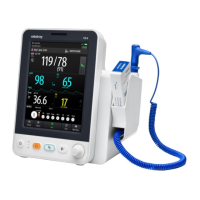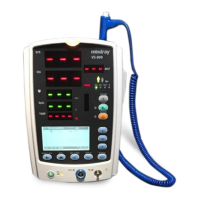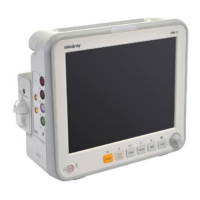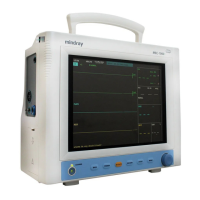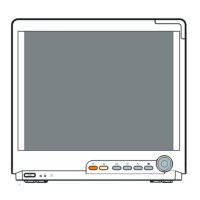11-1
11 Monitoring CO
2
11.1 Overview
CO
2
monitoring is a continuous, non-invasive technique for determining the
concentration of CO
2
in the patient’s airway by measuring the absorption of infrared (IR)
light of specific wavelengths. CO
2
has its own absorption characteristic and the amount of
light passing the gas probe depends on the concentration of the measured CO
2
. When a
specific band of IR light passes through respiratory gas samples, some of IR light will be
absorbed by the CO
2
molecules. The amount of IR light transmitted after it has been
passed through the respiratory gas sample is measured with a photodetector. From the
amount of IR light measured, the concentration of CO
2
is calculated.
The CO
2
measurement is to monitor the patient’s respiratory status.
CO
2
monitoring is intended for adult, pediatric and neonatal patients.
11.2 Safety
WARNING
Remove the airway sampling line from the patient’s airway while nebulized
medications are being delivered.
Leakage in the breathing or sampling system may cause the displayed EtCO
2
values to be significantly low. Always make sure that all components are
securely connected.
EtCO
2
values measured from the CO
2
module may differ from those of from the
blood gas analysis.
Route all tubing away from the patient’s throat to avoid strangulation.
Inspect the airway for a tight connection and make proper settings before
attaching it to the patient.
Squeezing or bending the sampling line during the CO
2
measurement may
cause inaccurate CO
2
reading or no reading.
11.3 Measurement Limitations
The following factors may influence the measurement accuracy:
Leaks or internal venting of sampled gas
Mechanical shock
Cyclic pressure up to 10 kPa (100 cmH
2
O)
Other sources of interference, if any
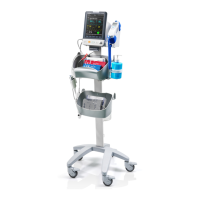
